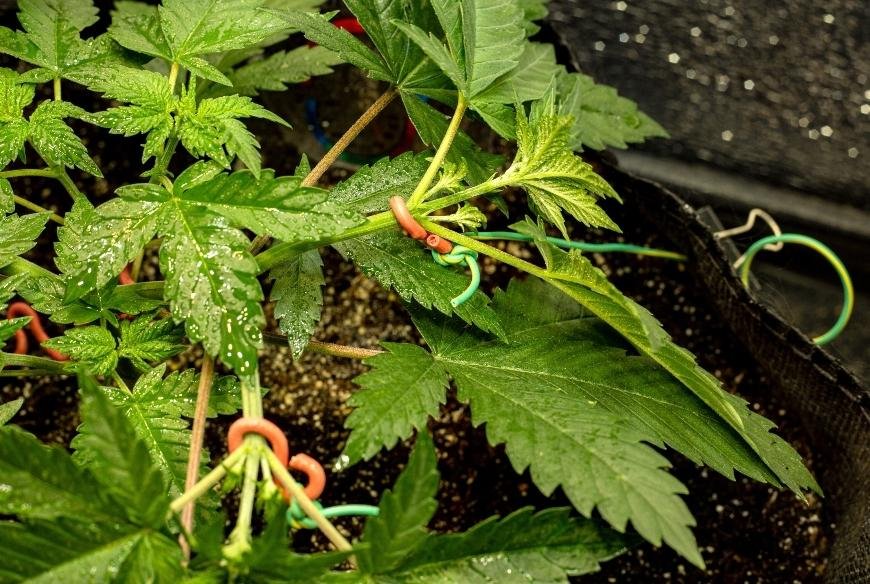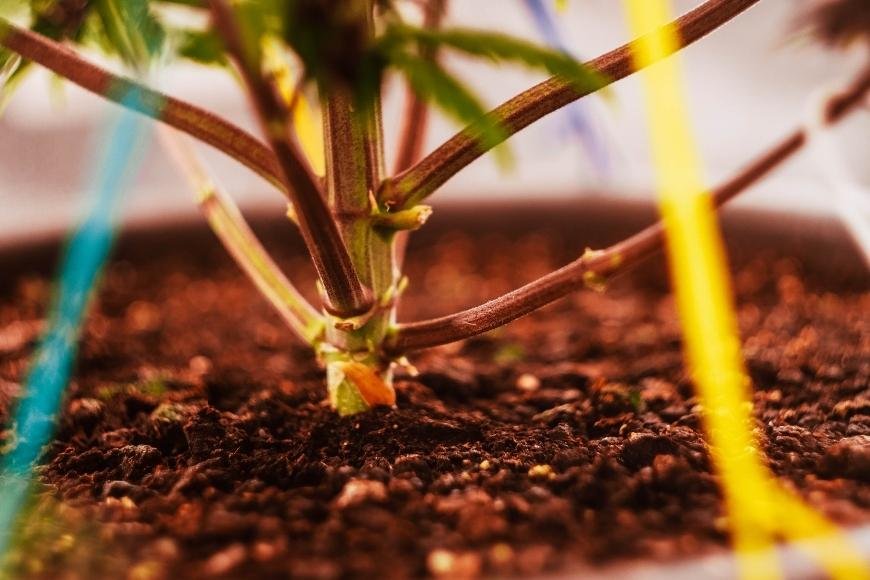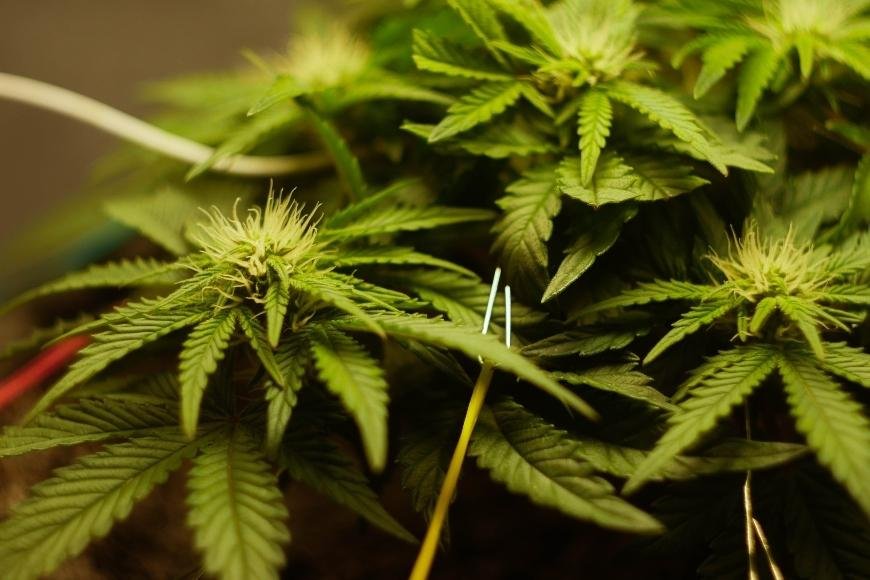How to Train Autoflowering Cannabis Plants
Discover how to train autoflowering cannabis plants for maximum yield with our comprehensive guide, covering low-stress training techniques and more.

Learning how to train autoflowering cannabis plants can greatly improve your overall yield and the quality of your buds. Autoflowering strains have unique characteristics that make them different from photoperiod cannabis plants, which means they require specific training techniques.
In this comprehensive guide, we will explore various methods for training autoflowering cannabis plants, such as low-stress training (LST), topping, and defoliation. We'll also discuss the best time to implement these techniques in order to maximize their effectiveness.
By understanding how to train autoflowering cannabis plants properly, you can unlock their full potential and enjoy a bountiful harvest of high-quality buds. So let's dive into the world of autoflowers and discover the secrets behind successful cultivation!
Table of Contents:
- What is Autoflowering Cannabis?
- Key Features of Autoflowering Cannabis Plants:
- Benefits of Training Autoflowering Cannabis Plants
- Low-Stress Training (LST)
- Topping Autoflowering Cannabis Plants
- Defoliation of Autoflowering Cannabis Plants
- Best Time for Training Autoflowering Cannabis Plants
- Frequently Asked Questions How to Train Autoflowering Cannabis Plants
- Conclusion
What is Autoflowering Cannabis?
Autoflowering cannabis plants are a unique type of cannabis that has gained popularity among growers for their fast growth and ease of cultivation. Unlike regular cannabis plants, autoflowers do not rely on light cycles to trigger the flowering stage. Instead, they automatically transition from the vegetative phase to the flowering phase based on their age, thanks to their genetic makeup.
The primary difference between autoflowering and regular cannabis plants lies in their genetics. Autoflowers contain genes from Cannabis ruderalis, a wild strain of cannabis known for its ability to flower without depending on photoperiods (light cycles). This characteristic allows them to grow and produce buds much faster than traditional strains, typically taking only 8-10 weeks from seedling to harvest.
Key Features of Autoflowering Cannabis Plants:
- Faster Growth Cycle: As mentioned earlier, autoflowers complete their entire life cycle within 8-10 weeks, making them ideal for those looking for quick harvests or multiple grows per season.
- No Light Cycle Dependency: Since they don't require specific light schedules like regular strains (12 hours of darkness during the flowering stage), you can grow autoflowers under constant lighting conditions throughout their lifecycle.
- Compact Size: Most autoflowering strains remain relatively small compared to traditional varieties due to their short growing period; this makes them perfect for small spaces or stealthy grows.
- Resilience: Autoflowering cannabis plants are generally more resistant to pests, diseases, and environmental stressors than their photoperiod counterparts due to their ruderalis genetics.
While autoflowers offer several advantages over regular strains, they do have some limitations. One of the main drawbacks is that they typically produce smaller yields compared to traditional varieties. However, by implementing proper training techniques such as low-stress training (LST), topping, and defoliation during the plant's growth cycle, you can maximize your yield and promote even growth in your autoflowering cannabis plants.

Benefits of Training Autoflowering Cannabis Plants
By implementing various training techniques, you can maximize the plant's exposure to light, promote even growth, and increase bud production. Let's explore some of the key benefits that come with training autoflowering cannabis plants:
Improved Light Penetration
Autoflowering cannabis plants typically have a short stature and dense foliage. As a result, it may be challenging for light to penetrate through the canopy evenly. Training helps in opening up the plant structure so that all parts receive an adequate amount of light. This ensures optimal photosynthesis rates throughout the entire plant.
Increase Bud Production
Bud production is directly related to how much light reaches different areas of your autoflowering cannabis plants. By using training techniques like Low-Stress Training (LST), you encourage more lateral branching which leads to increased bud sites across multiple branches instead of just one central cola.
- Better Air Circulation: Proper air circulation is essential for preventing mold and pests from infesting your cannabis garden. Training improves airflow around each branch by creating space between them.
- Promote Even Growth: When left untrained, some branches may grow taller than others resulting in uneven distribution of resources within the plant leading to smaller yields on lower branches; however, when trained correctly all branches will receive equal amounts energy allowing better overall development.
- Maximize Space Utilization: Training techniques like LST allow you to grow more plants in a limited space, which is especially useful for indoor growers with restricted areas.
In order to reap these benefits, it's essential to use the right training techniques and implement them at the appropriate time during your autoflowering cannabis plant's life cycle. Keep reading as we dive into different methods of training and when they should be applied.
Low-Stress Training (LST)
Low-stress training, or LST, is a gentle and effective method for shaping and guiding the growth of your autoflowering cannabis plants. By using this technique, you can maximize light penetration to all parts of the plant while minimizing stress on its delicate structure. In this section, we'll discuss how to implement LST in your grow setup and what benefits it offers.
The Basics of Low-Stress Training
LST involves gently bending and tying down branches to encourage horizontal growth rather than vertical growth. This results in a more even canopy that allows light to reach all areas of the plant equally. The process does not involve cutting or damaging any part of the plant; instead, it relies on manipulating its natural flexibility.
Benefits of Low-Stress Training
- Better Light Penetration: A flat canopy ensures that each bud site receives an equal amount of light exposure, leading to consistent development across the entire plant.
- Increase Yield: With better access to light comes increased photosynthesis rates which ultimately lead to larger yields at harvest time.
- Fewer Issues with Mold & Pests: An evenly distributed canopy promotes proper airflow around your plants reducing chances for mold formation or pest infestations taking hold.
How To Implement Low-Stress Training
- Select Suitable Branches: To begin with low-stress training choose healthy lower branches that are flexible enough without snapping when bent over gently but strong enough not break under their own weight as they grow horizontally outwards from main stem . You may also want focus primarily younger stems early vegetative stage since these will be easier manipulate overall.
- Secure Branches: Using soft ties or plant twist-ties, gently bend the selected branches down and away from the main stem. Secure them to a stake in your grow pot or other anchor points within your growing environment without causing any damage to the branch itself.
- Maintain & Adjust: As plants continue their growth cycle, monitor progress regularly adjusting tie-downs as needed ensuring optimal light exposure throughout entire canopy area while avoiding overcrowding between individual branches which could lead potential issues such mold formation pest infestations taking hold .
Incorporating low-stress training into your autoflowering cannabis cultivation routine can significantly improve yields and overall plant health.
Topping Autoflowering Cannabis Plants
One of the most effective ways to increase your autoflowering cannabis plant's yield is by topping. Topping involves cutting off the main stem's tip, which encourages the growth of multiple branches and promotes even distribution of energy throughout the plant. However, it's essential to approach this technique with caution as autoflowers have a shorter life cycle compared to regular cannabis plants.
Why Top Autoflowering Cannabis Plants?
- Better light penetration: By topping your plants, you create an even canopy that allows more light to reach lower branches, resulting in increased bud production.
- Increase in cola sites: Topping creates multiple main colas instead of just one central cola. This leads to a higher overall yield since there are more areas for buds to develop.
- Easier management: A topped plant has better structural support and is less likely to bend or break under its own weight during flowering.
How To Top Autoflowering Cannabis Plants
- Select a healthy plant: Choose an autoflower that looks strong and vigorous before attempting any form of training or manipulation.
- Determine when to top: The best time for topping is usually around day 20-25 from germination when at least four nodes have developed on the stem (though some growers prefer waiting until six nodes).
Topping autoflowering cannabis plants is an effective way to increase the yield of your harvest, but it must be done with care. By understanding and properly executing defoliation techniques on your autoflowering plants, you can ensure that they reach their full potential for growth and flowering.
Defoliation of Autoflowering Cannabis Plants
Defoliation is the process of removing leaves from your autoflowering cannabis plants to improve light penetration and airflow. This technique can be beneficial for maximizing yield, but it's crucial to do it properly without stressing the plant too much. This article will discuss the advantages of stripping autoflowering cannabis plants and give some advice on how to do it properly.
Benefits of Defoliation
- Better Light Penetration: Removing some leaves allows more light to reach lower branches and buds, promoting even growth throughout the plant.
- Increase Airflow: Defoliation helps in reducing humidity levels around your plants by improving air circulation, which can prevent mold and other issues caused by excessive moisture.
- Energize Growth: By eliminating unnecessary foliage, you redirect energy towards bud production instead of leaf maintenance. This results in bigger yields at harvest time.
Tips for Proper Defoliation
- Gentle Approach: When defoliating autoflowers, remember that they have a shorter life cycle than photoperiod strains. It's essential not to stress them too much during this process; otherwise, their growth might be stunted or slowed down significantly. Be gentle when removing leaves - use clean scissors or your fingers instead of yanking them off forcefully.
- Selective Removal: Focus on removing large fan leaves that are blocking light from reaching lower branches or overcrowding inner parts of the plant canopy. Avoid removing too many leaves at once, as this can shock the plant and hinder its growth.
- Timing is Key: The best time to defoliate autoflowering cannabis plants is during their vegetative stage, before they start flowering. This allows them enough time to recover from the stress of defoliation and focus on bud production during the flowering phase. It's also a good idea to avoid defoliating when your plants are already stressed due to factors like nutrient deficiencies or pest issues.
In summary, proper defoliation of autoflowering cannabis plants can lead to better light penetration, increased airflow, and more efficient energy use for bud production. Exercise caution when pruning - be delicate and only trim what is essential to prevent undue pressure that may hamper their development.

Best Time for Training Autoflowering Cannabis Plants
Knowing when to start training your autoflowering cannabis plants is crucial in order to achieve optimal results. In this section, we will provide guidance on the best time to implement various training techniques such as low-stress training (LST), topping, and defoliation.
Low-Stress Training (LST)
The ideal time to begin LST with your autoflowering cannabis plants is during their vegetative stage. This usually occurs between weeks 2 and 4 of their life cycle. By starting early, you can gently guide the plant's growth without causing too much stress or damage. However, it's essential not to wait too long before implementing LST since autoflowering strains have a shorter growing period, leaving less time for recovery if any issues arise.
Topping Autoflowering Cannabis Plants
- When: Topping should be done once the plant has developed at least 4-6 nodes (sets of leaves). For most autoflowers, this happens around week 3 of their life cycle.
- Note: It's important not to top your plants too late into their growth because they may struggle to recover due to their short lifespan. Additionally, some growers avoid topping altogether with certain sensitive strains that are more prone to stress-related issues.
Defoliation of Autoflowering Cannabis Plants
The process of defoliating involves removing select fan leaves from your cannabis plants in order to improve light penetration and airflow within the canopy. The best times for defoliation are:
- During the vegetative stage, around weeks 2-4 of their life cycle.
- At the beginning of the flowering stage, usually between weeks 5 and 6 for autoflowering strains.
In both cases, it's essential to be gentle when defoliating your plants and avoid removing too many leaves at once. This will help minimize stress on your autoflowers while still promoting better light penetration and airflow throughout their growth.
To sum up, timing is crucial when training autoflowering cannabis plants. By implementing techniques such as LST, topping, and defoliation during appropriate stages in their life cycle, you can maximize yield potential without causing undue stress or damage to these sensitive strains.
Frequently Asked Questions How to Train Autoflowering Cannabis Plants
What are the proper training techniques for Autoflowers?
The proper training techniques for autoflowering cannabis plants include Low-Stress Training (LST), topping, and defoliation. LST involves gently bending and tying down branches to promote even growth, while topping involves cutting off the main stem's tip to encourage lateral growth. Defoliation is the selective removal of leaves to improve light penetration and airflow.
Can you train Autoflower?
Yes, you can train autoflowering cannabis plants using various methods such as Low-Stress Training (LST), topping, and defoliation. These techniques help optimize plant growth, increase yield potential, and enhance overall plant health.
When should I start training my Autoflower?
It's best to start training your autoflowering cannabis plants when they have developed 4-6 nodes or sets of true leaves. This typically occurs around 2-4 weeks after germination. Starting at this stage allows the plant enough time to recover from any stress caused by the training process before entering its flowering phase.
Should I top or train my Autoflower?
Both topping and other forms of training like Low-Stress Training (LST) can be beneficial for autoflowers depending on your goals. Topping encourages bushier growth with multiple colas but may slightly delay flowering time; whereas LST promotes even canopy development without affecting flowering schedule too much. Experiment with different methods based on your specific needs.
Conclusion
Training autoflowering cannabis plants can be a daunting task for many, but with the right techniques and timing, it can lead to bountiful yields. Through low-stress training (LST), topping, and defoliation methods, growers can manipulate their plants to produce more buds and increase potency. By understanding the benefits of training autoflowering cannabis plants and implementing these techniques at the appropriate time during growth cycles, cultivators can achieve optimal results.





















































































































